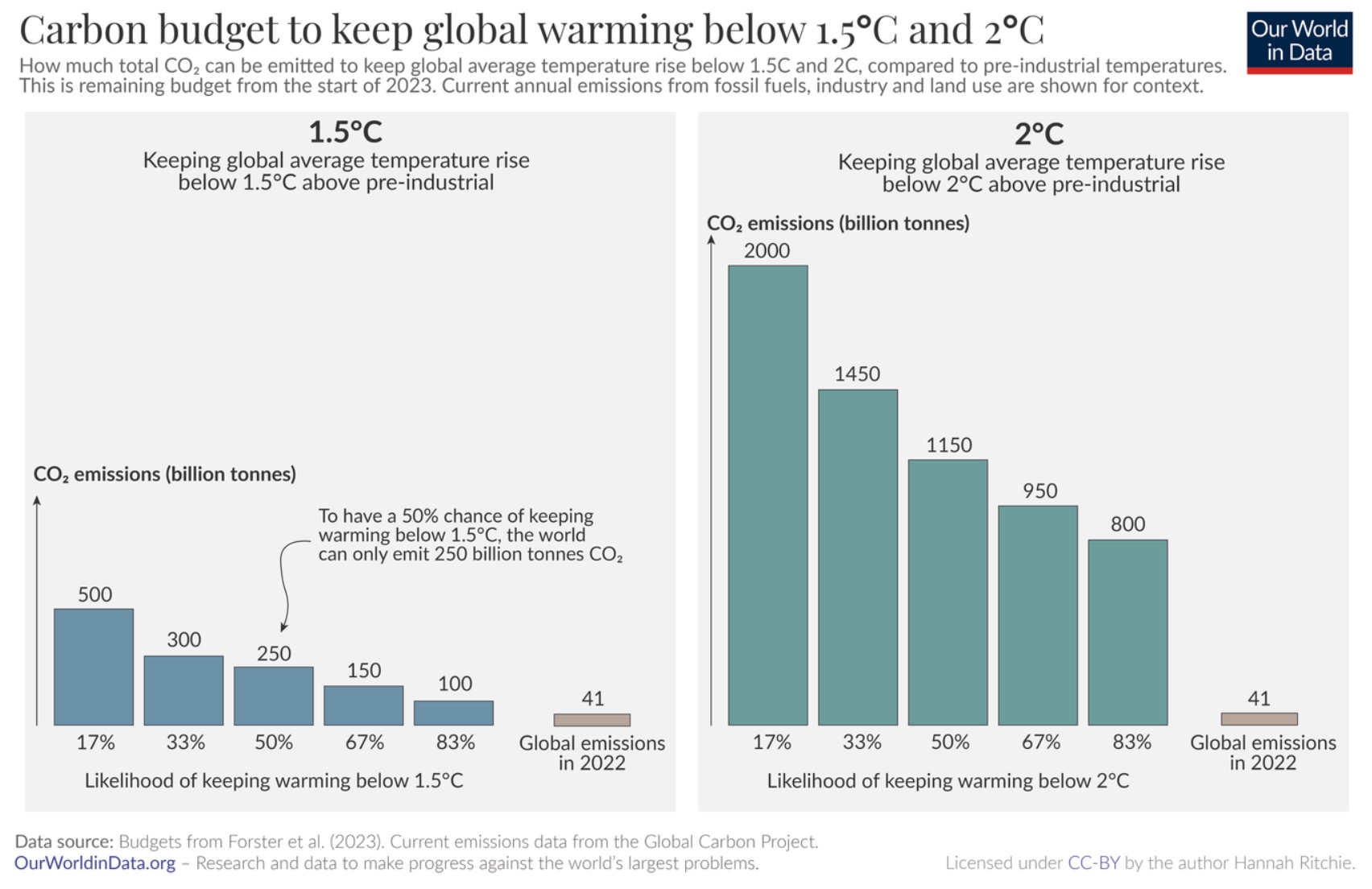In the Paris Agreement, the world set the goal of keeping the global average temperature rise “well below 2°C” and “pursuing efforts to limit warming to 1.5°C.”
Our global efforts are now measured against these targets of 1.5°C and 2°C. Pathways are assessed on whether they are ‘on track’ to meet these commitments.
Researchers estimate how much more CO2 we can emit to keep temperatures below 1.5°C and 2°C. This is called the world’s ‘carbon budget’.
How much of our ‘carbon budget’ do we have left to meet these goals?
The chart below shows the remaining carbon budget for 1.5°C and 2°C. These are the latest estimates from Piers Forster and colleagues, published in 2023.1 It’s based on how much can be emitted from the start of 2023 onwards.
There is some uncertainty in how the climate responds to our emissions and the impact of other greenhouse gas emissions, such as methane and nitrous oxide. That means there is not a single ‘budget’. Instead, it is a sliding scale of probabilities. The lower our emissions, the more likely we are to keep temperature rise below our targets.
The budgets, therefore, are given as likelihoods of keeping warming below that level.
For a 50% chance of limiting temperatures to 1.5°C, we could emit a further 250 billion tonnes of CO2. But there would still be a 50% chance that we go over this target. If we wanted to be risk-averse – and have an 83% chance of staying below – the world can only emit 100 billion tonnes.

What’s clear is how small our remaining budget for 1.5°C is.
The world emitted 41 billion tonnes of CO2 in 2022.2 To have a 50% chance of staying below 1.5°C, we can only emit 250 billion tonnes. That’s just six years of our current emissions.3
The budget for 2°C is significantly larger. For a 50% chance, the world could emit 1150 billion tonnes. That’s around 28 years of current emissions.4 For a two-thirds chance, it’s 23 years.
That might seem more achievable, but the world is currently not on track to achieve this. Current policies have us on course for around 2.5°C of warming. The world needs to reduce emissions much faster to keep temperatures below 2°C.
Republished with permission of Our World In Data under a Creative Commons license. Read the original article.






